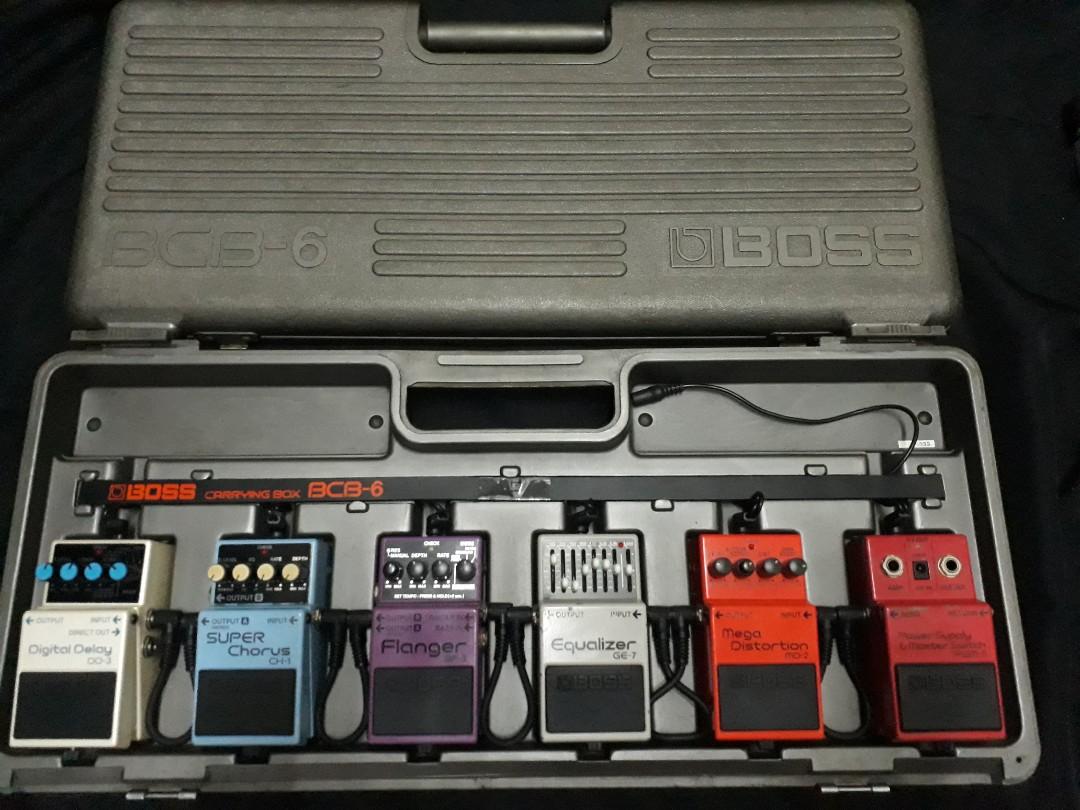The discussion around how to transport guitar pedals has a very interesting place, right at the heart of Analog Alien.
Over the years the solutions have changed dramatically as originally guitarists would simply put pedals in their gig bags along with a couple of cables and some 9v batteries.
It’s not unusual (ok Tom sit back down) to see pictures from the 60’s & 70’s of a handful of pedals roughly laid out in front of players such as Hendrix, and as it was that, over the years Hendrix’s pedal collection grew, so they did for the rest of the world’s guitarists.
Eventually by the late 70’s players had so many pedals and effects that pedalboards started to appear on stages. Most of these were single units that had the circuits taken out of the original pedals and placed in one gigantic enclosure. On the upside, this meant that things should break less, however, there was no room to change things around if desired.
In the early 80’s BOSS released the BCB-6 which paved the way for the modern pedalboards we see today. It remarkably closed up like a suitcase keeping everything neat and tidy between gigs, the case protected the pedals against damage, and there was even room for a power supply and a tuner. The downside was that only BOSS pedals fitted perfectly due to the moldings and you could only fit 6 pedals … but back then people rarely used more than 6 pedals and BOSS had (and still has) the largest range of pedals.

During this time we saw Rack mounted effects units become more common, these were even seen backstage at smaller artists’ gigs but normally at large stadium bands being controlled by a tech.
But let’s keep the focus on pedals as that’s what we’re here for!
Today there really are 2 solutions to transporting your pedals around.
- You buy a pedalboard which may come with a hard/soft case of sorts and if not one can normally be bought separately. You then place Velcro on the bottom of your pedals and attach them to the pre-velcroed board so they don’t move around anywhere. You buy something to power your pedals and attach this (normally) to the bottom of the board and off you go! Don’t worry we’ll cover pedalboard builds fully in another blog 🙂
- You buy a single pedal which has everything you need in it and go the route of Mr. Hendrix by laying it down on the ground in front of you and … well that’s it, simple huh!?
Some people often use the latter option on a board as part of a larger setup and then remove that pedal from the larger board to use on its own when playing smaller gigs or jamming with friends.
This is useful as it gives you the best of both worlds, options for these types of pedals tend to be digital such as the BOSS GT-1000 Core and the Line 6 Helix Stomp however Analog Alien specifically designed some of our own analog pedals exactly for this.
The Rumble Seat, for example, has the perfect bare bones any player could need taking inspiration from the early all-in-one enclosure boards of the 70’s yet in a small pedal format, this pedal is a pedalboard in its own right.
Featuring Drive, Delay, and Reverb all voiced to perfectly suit one another tonally you can happily gig with this pedal on its own. All running off of a single power supply!
Adding the Rumble Seat to a pedalboard you have the perfect core tone with your additional effects adding expression to your music. What’s more, you can have a Rumble Seat modded to feature an effects loop making it even more suited for this purpose!
So in answer to how to transport guitar pedals, either go down the route of a pedalboard (remember if you have a large board make sure you have wheels on the case!) Or go down the route of something small with a lot of features and of course you can do both of these things together and have the best of both worlds!

